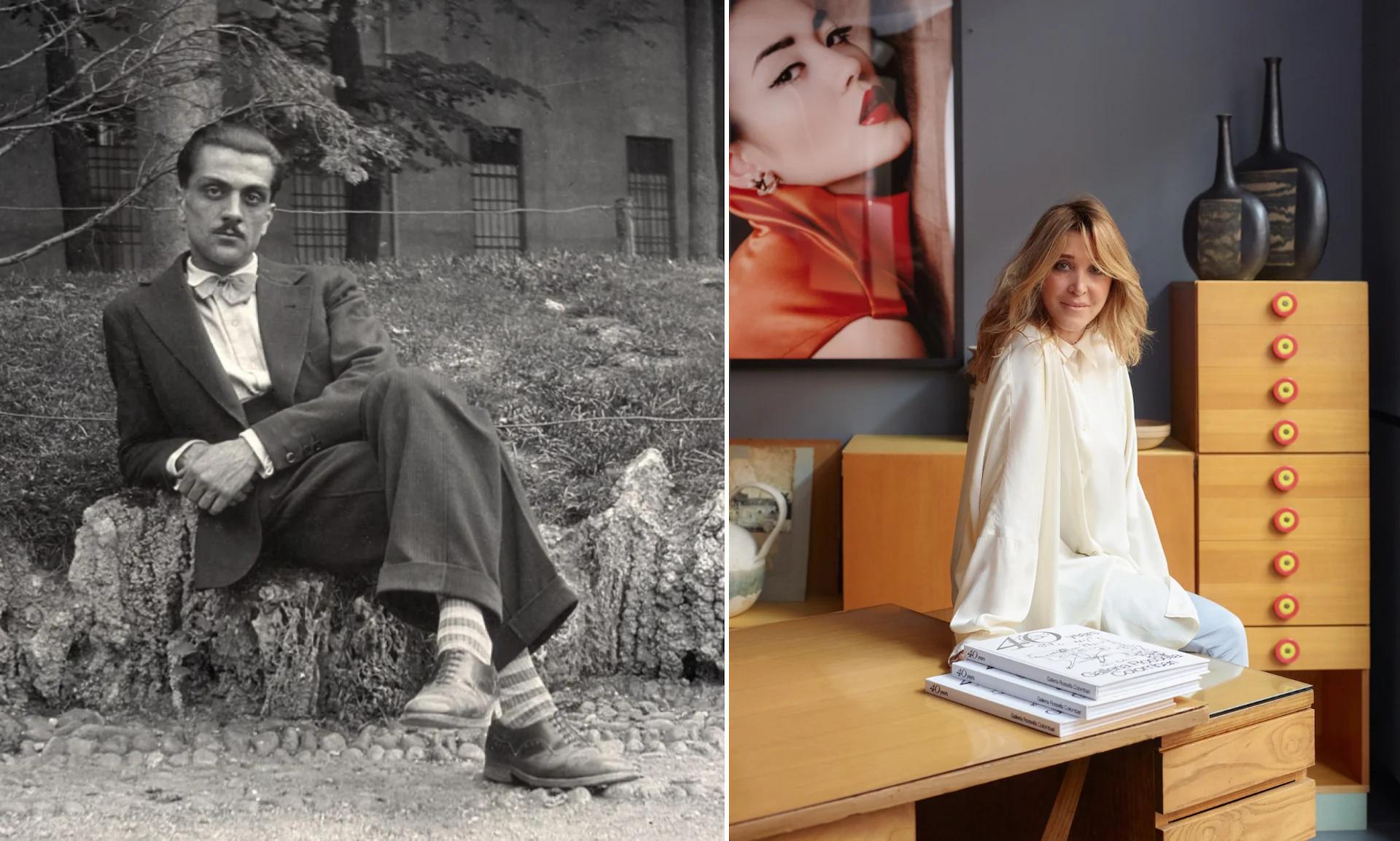MASTERPIECES OCTOBER 26 2020
by Maryanna Estomba
The allure of Carlo Mollino’s masterful, magical design, seen through the eyes of Italian gallerist Rossella Colombari

CARLO MOLLINO/ DESK FOR LATTES PUBLISHING HOUSE, 1953
Photo © Galleria Rossella Colombari
Rossella Colombari’s first encounter with Carlo Mollino’s work was, to her recollection, “magical.” She was at the shop of antiques dealer Iorio Zolino when he showed her a room divider by Carlo Mollino designed for a private home called Casa Minola. Colombari was only 20 years old at the time, and she describes it as love at first sight. “My heart missed a beat,” recalls Colombari. “I began to actually tremble, and for the first time I experienced an irrational desire to possess an object at any cost.” She calculated how much money she had in her savings account and asked her father, an antiques dealer, to help her negotiate a discount. It worked. Colombari was now the proud owner of a design by Carlo Mollino.

CARLO MOLLINO | ROSSELLA COLOMBARI
Left: Photo © Museo Casa Mollino | Right: Photo © Galleria Rossella Colombari
Born in Turin in 1905, Mollino was an architect, designer, and photographer whose tremendous influence on postwar Italian design seems remarkable in light of the rarity of his designs. He created almost entirely for private commissions, working across scales and typologies, including chairs and tables as well as apartment buildings and other structures in Turin. He was a highly intelligent, mysterious iconoclast whose designs exude an exceptional formal sophistication, even when compared to that of his many talented contemporaries. “Everything is permissible as long as it is fantastic,” he once said. His erotic portraits of women, unknown or unappreciated in his own lifetime, can today be found at major museums around the globe.
The profits from the eventual sale of that had-to-have room divider allowed Colombari to start her own business as a dealer—and to seek out more of Mollino’s work. Around 1983, through a series of connections, she tracked down an aeronautical engineer who was the owner of Mollino’s last studio. While visiting the studio, she came across the contact information for Lattes Publishing House. “Upon contacting them,” she says, “I was informed that they had just moved some of the architect’s furniture into storage.” She followed the trail. “At first glance,” she recalls, “it looked like a cemetery, with large sheets concealing the refined and sensual forms of Mollino’s furniture.”

CARLO MOLLINO/ DESK FOR LATTES PUBLISHING HOUSE, 1953
Photo © Galleria Rossella Colombari
Colombari acquired Lattes Publishing House’s entire inventory of furnishings at the time, which included this architonic, wood desk designed by Mollino circa 1953. One of only five examples ever produced, the design is at once modest and dynamic, functionalist and expressive. Its structure is so alluring that no ornamentation is needed. In the 1990s, Colombari sold it to a private collector from Turin, but, as luck would have it, she was recently offered the chance to re-acquire it. Of course, she seized the moment. ◆
Rossella Colombari was born in Turin into a renowned family of antique dealers, and represents the fourth generation in the field. In the early 1980s, she founded her first gallery with her sister Paola, focusing on 20th-century design and pioneering the development of modern design collecting. The sisters dedicated themselves to the research and promotion of the works of Carlo Mollino, later publishing a biography of the architect and his work titled Carlo Mollino: Furniture Catalogue.
In 1991, Rossella Colombari founded her second gallery in Milan, concentrating on masterpieces of 20th-century design by architects and designers such as Giò Ponti, Osvaldo Borsani, Ico Parisi, Carlo Graffi, Carlo de Carli, Franco Albini, Fontana Arte, Joe Colombo, Ettore Sottsass, and Alessandro Mendini.


